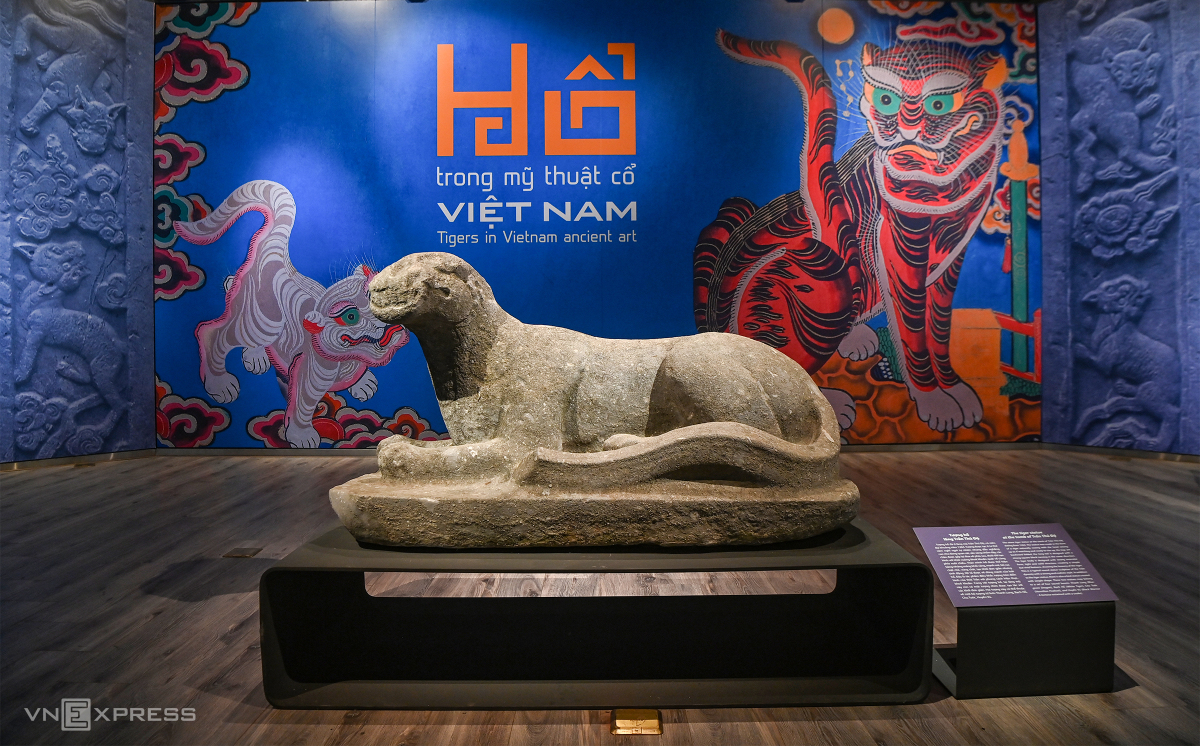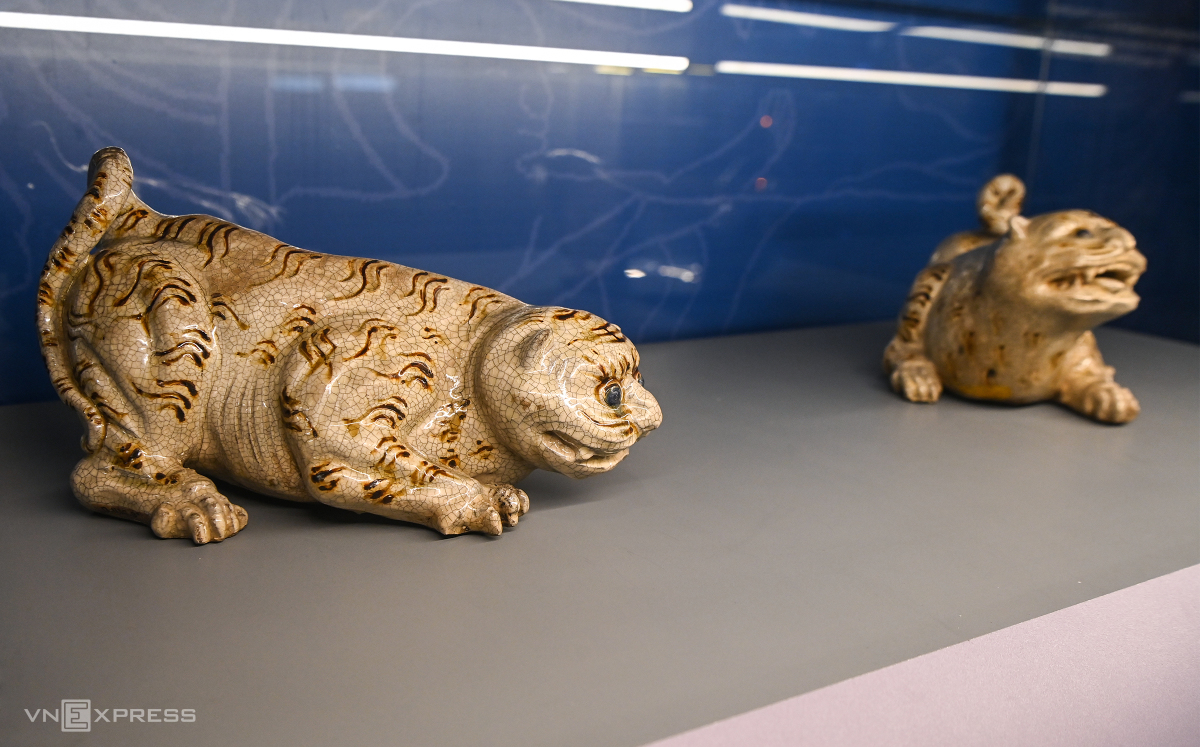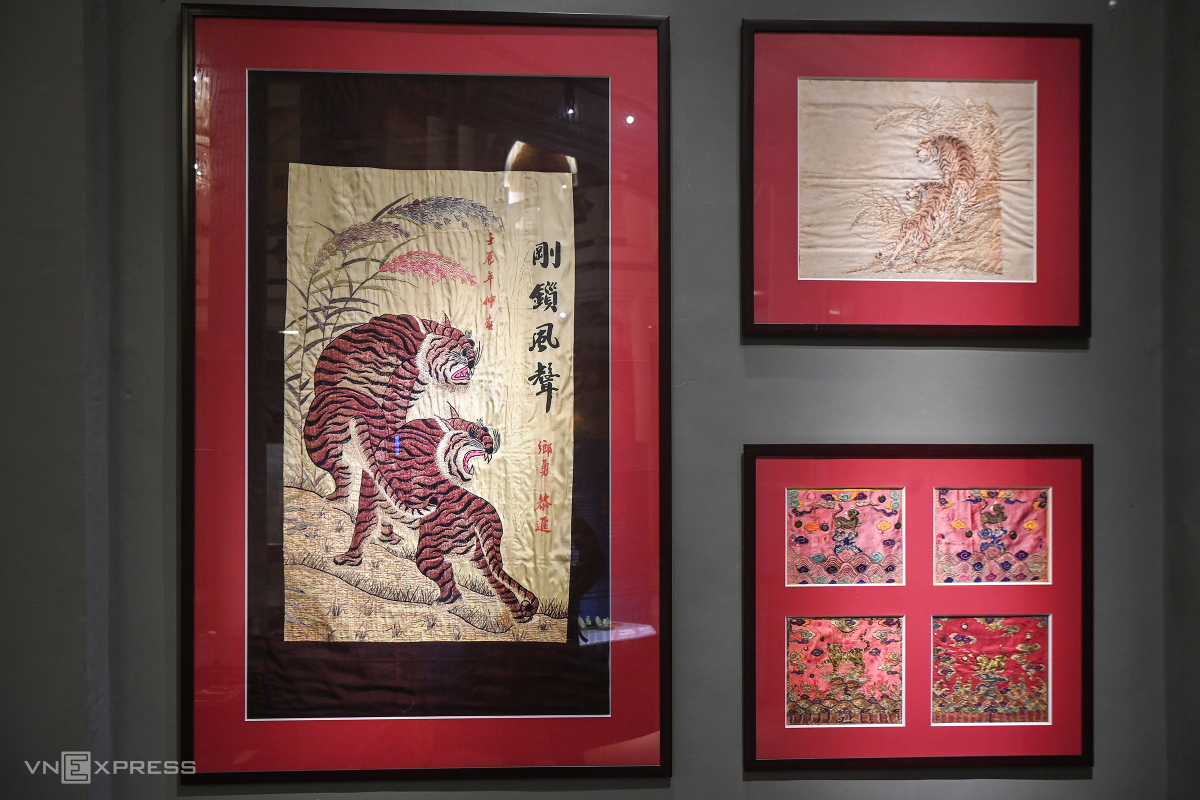An exhibition titled “Tigers in Vietnam’s ancient art” is now open at the Vietnam National Museum of History in Hanoi to celebrate the upcoming Year of the Tiger.
 |
|
The exhibition displays the tiger in stoneware, bronze and pottery as well as on paper, cloth and other materials. The artifacts go as far as back as the Dong Son culture (1,000 BC to the first century AD) to the period of Vietnam’s last royal rulers, the Nguyen Dynasty (1802-1945). |
 |
|
This century-old stone tiger statue found at the tomb of former historic general Tran Thu Do was made around 1264. |
 |
|
Tiger statues excavated from mausoleums of the Le – Trinh dynasties (17th-18th centuries). Usually, the statue was placed at the front door as the spirit animal protecting the mausoleum. |
 |
|
Bat Trang ceramic tiger statues from the 1740-1786 period. |
 |
|
Images of the tiger on both sides of an ancient bronze weapon dating back 2000-2500 years. The weapon has a horizontal blade with a pointed tip. The tiger images on the blade have dots on the body, emphasizing they are male while the handle features two crocodiles. |
 |
|
A tiger chasing a horse on a 13th-14th century flower pot. |
 |
|
Decorative tiles featuring tigers used village communal house during the 13th-14th centuries (above) and the 16th century (below). |
 |
|
Tiger on a 15th century pottery piece. |
 |
|
The set of jade statues of 12 zodiac animals in the Nguyen Dynasty royal palace made in the 18th-19th centuries. The collection currently lacks the jade statue of the dog. |
 |
|
Artist Le Dinh Nghiem’s paintings of tigers in the Hang Trong folk art genre. |
 |
|
Tiger embroidered fabric made during the early 20th century. |
- Reduce Hair Loss with PURA D’OR Gold Label Shampoo
- Castor Oil Has Made a “Huge” Difference With Hair and Brow Growth
- Excessive hair loss in men: Signs of illness that cannot be subjective
- Dịch Vụ SEO Website ở Los Angeles, CA: đưa trang web doanh nghiệp bạn lên top Google
- Nails Salon Sierra Madre
 VnExpress News The News Gateway of Vietnam
VnExpress News The News Gateway of Vietnam





